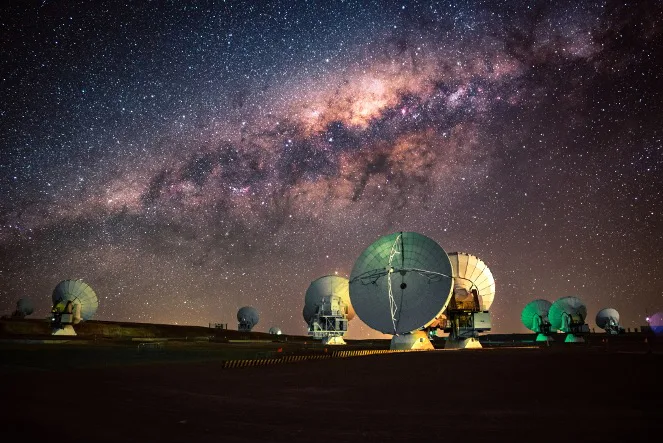Black holes represent one of the most fascinating and intense phenomena in the cosmos, prompting a new proposal for a dedicated space telescope aimed at investigating them further. The Event Horizon Telescope (EHT) collaboration, known for capturing the inaugural image of a black hole in 2019 and a landmark image of our galaxy’s central supermassive black hole in 2022, is spearheading an ambitious new mission dubbed the Black Hole Explorer (BHEX).
The BHEX initiative envisions utilizing a space-based telescope to gather unparalleled data on black holes, free from the obstructions of Earth’s atmosphere—specifically, the interference caused by water vapor. This mission seeks to integrate this orbital data with existing observations from the ground-based telescopes currently employed in the EHT endeavor. The next phase of this project represents a partnership between the Center for Astrophysics | Harvard & Smithsonian (CfA) and the National Radio Astronomy Observatory (NRAO).
Michael Johnson, the principal investigator for BHEX at the CfA, expressed enthusiasm about the collaboration, stating, “This partnership with NRAO signifies a significant advancement in our mission to unravel the mysteries of black holes. By extending the EHT to include space-based observations, we will have the capability to examine multiple black holes and understand how they fuel the brightest engines in the universe.”
The CfA team is preparing a proposal to submit to NASA next year, with aspirations for a launch in 2031. Like the previous ventures of the Event Horizon Telescope, the mission intends to capture complex details surrounding the supermassive black holes that are typically found at the heart of nearly every galaxy.
While black holes themselves remain invisible, due to their immense density trapping even light, the regions surrounding their event horizons are often dynamic and tumultuous. These areas are filled with large clouds of dust and gas being drawn in and accelerated by the black hole’s strong gravitational pull. As this material collides and interacts, it heats up and emits light—an observable glow that can provide valuable insights even from Earth.
When considering the launch of a space telescope, establishing robust ground infrastructure is also critical for the mission’s success. There needs to be facilities capable of transmitting and receiving data from space, alongside ground-based observatories gathering direct measurements. The NRAO operates some of the globe’s most advanced radio observatories, like the Green Bank Telescope and the Atacama Large Millimeter/submillimeter Array (ALMA), which could facilitate data collection for the proposed satellite observatory.
Sara Issaoun, a Submillimeter Array Fellow at the CfA and the BHEX science operations lead, highlighted the importance of this collaboration: “NRAO operates some of the most sensitive radio observatories worldwide, making it an ideal partner for CfA in realizing this hybrid radio observatory. By merging space and ground-based observations, we will achieve unprecedented resolution and uncover new perspectives on these intriguing cosmic entities.”






